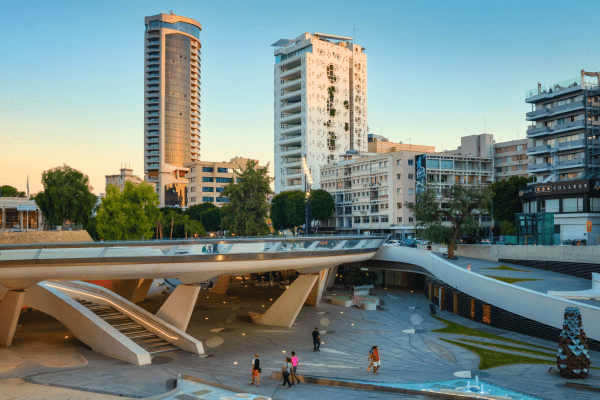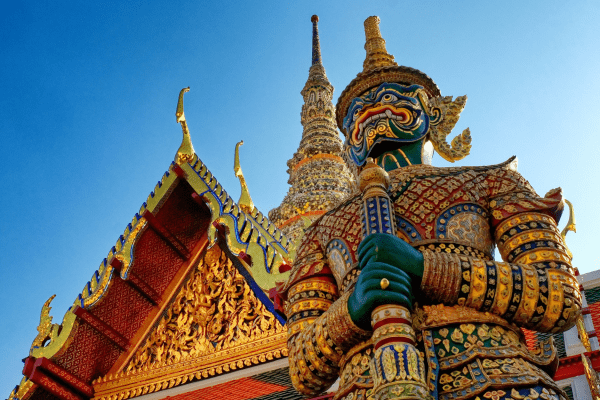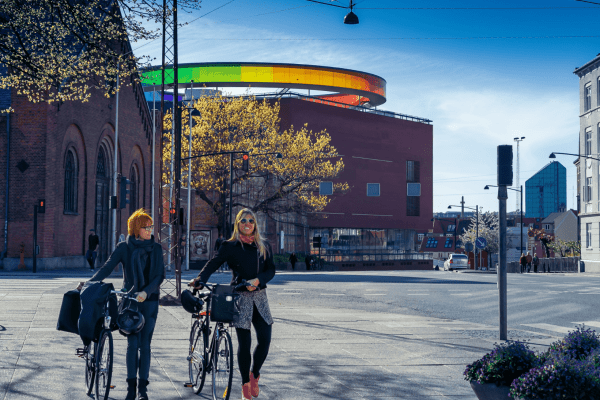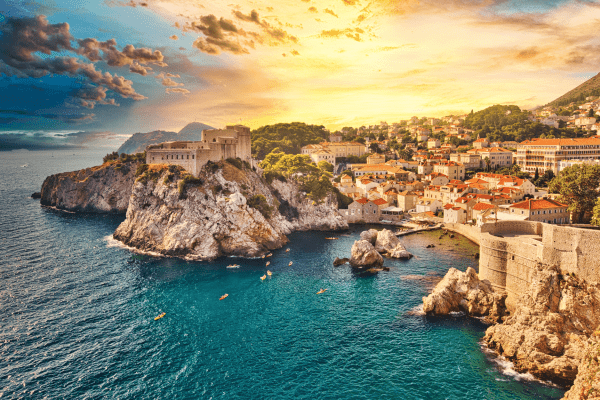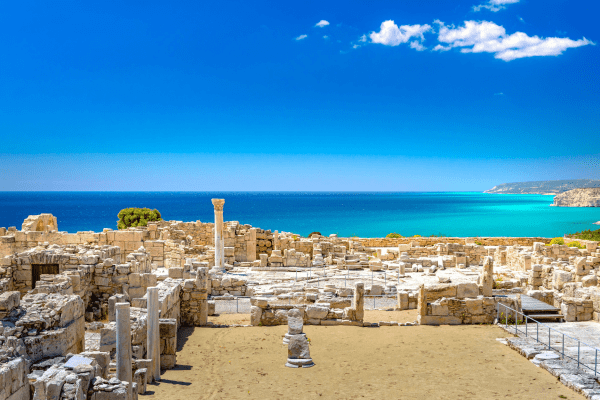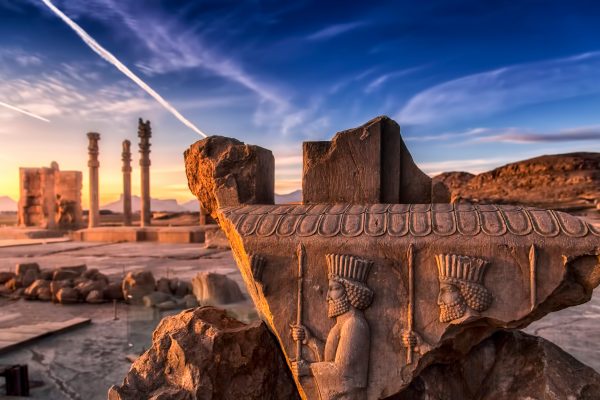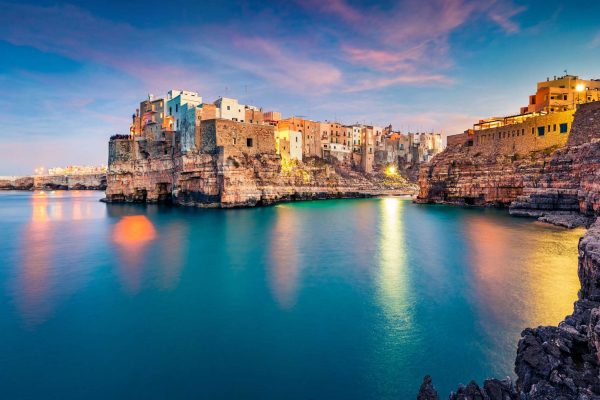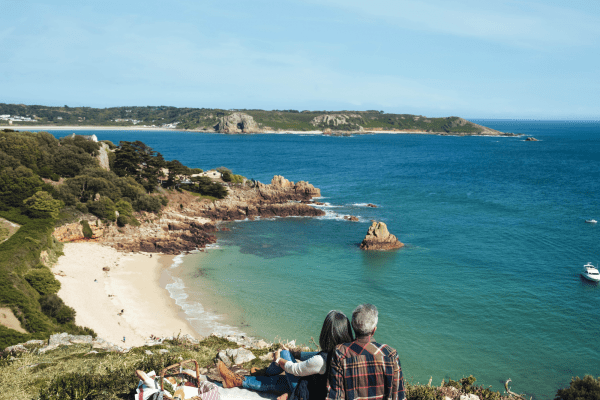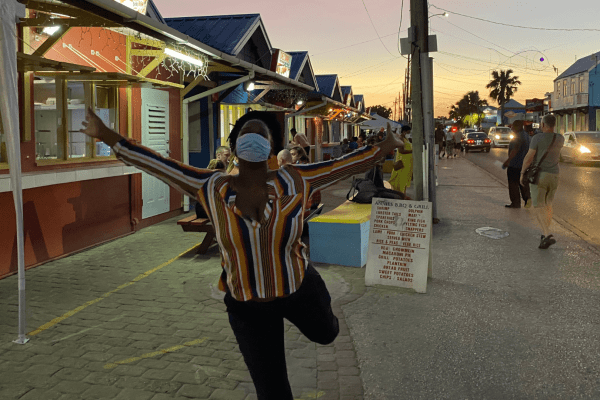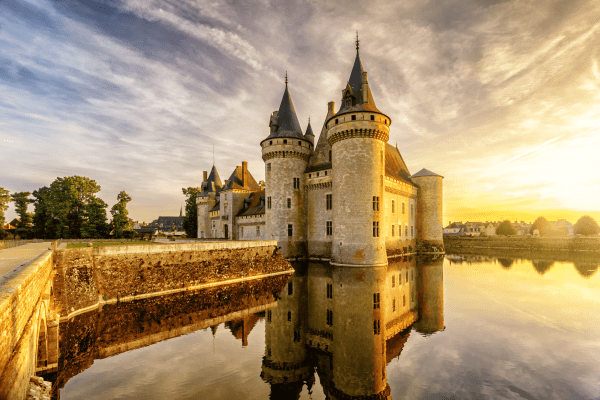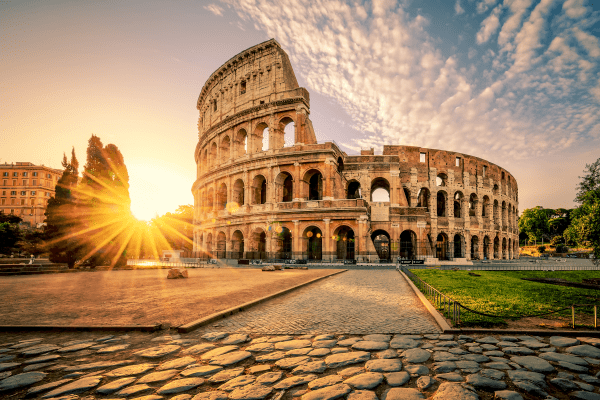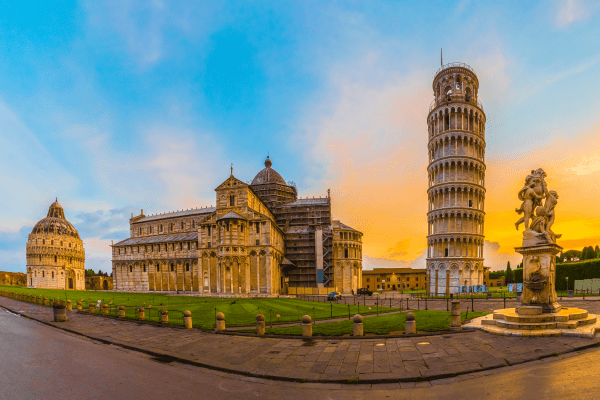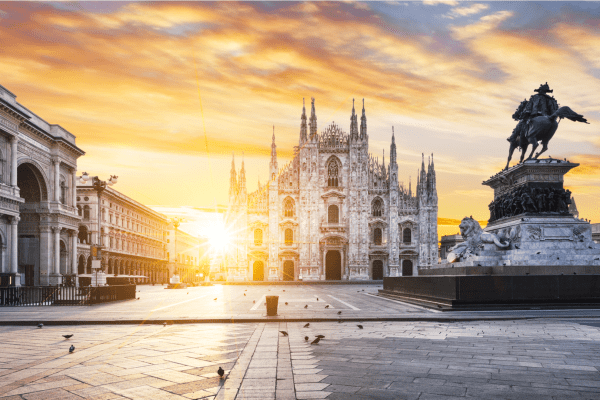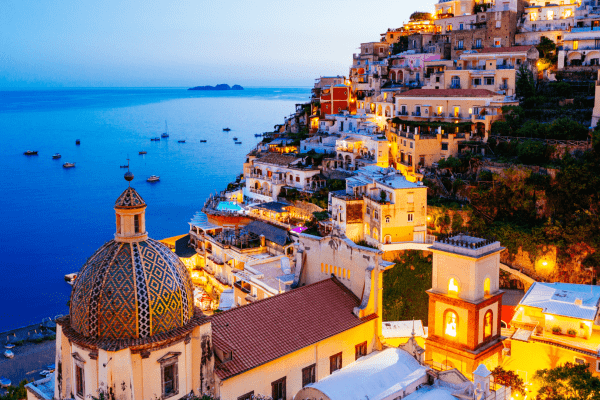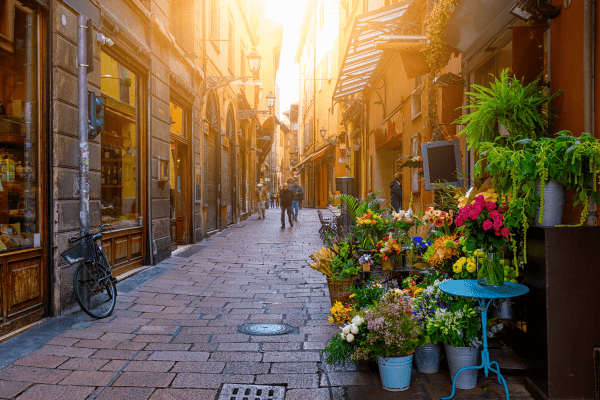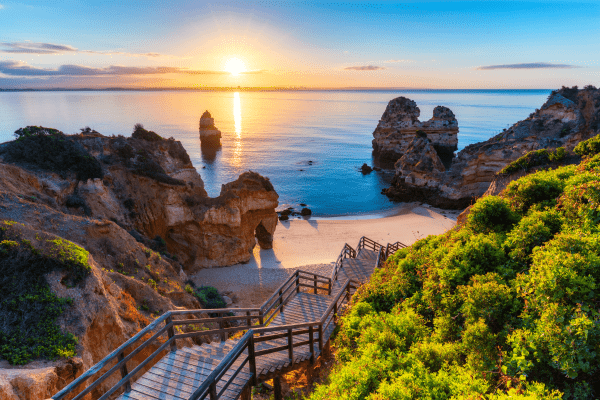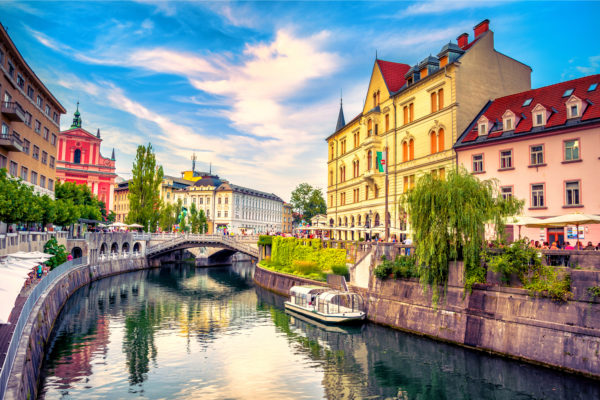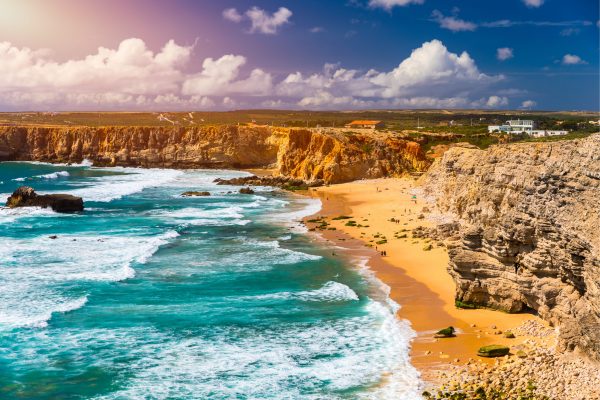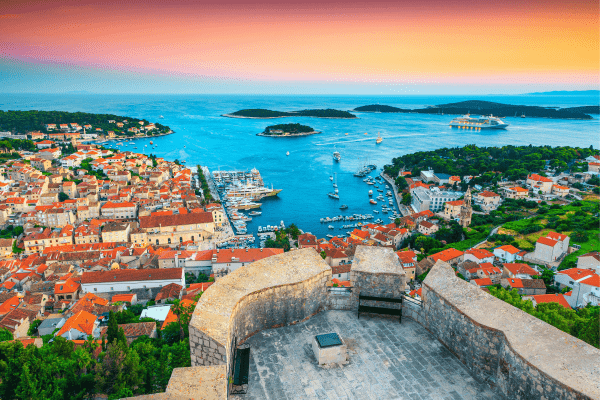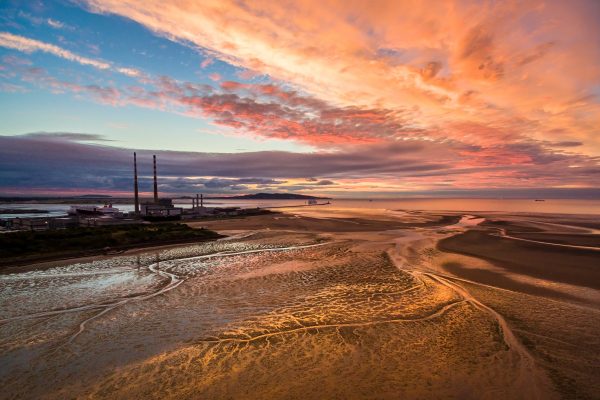The rain doesn’t come right away. You wake up—early—to sunshine. The morning is golden and warm, and birds sing all around as you devour your breakfast of gallo pinto and eggs. You likely spend the whole morning in a delicious, humid warmth, browsing wooden bowls in shops or hurling yourself into Pacific waves.
When noon comes, the clouds gather. Only then do you anticipate the coming rain. The skies darken, and by early afternoon, the tropical downfall begins. Brown waters flood the streets and fill impossibly deep gutters. Sheets of rain hammer the tin roofs all around. But you don’t mind, at least not as much as you thought you would. The greenery has never looked greener. Toads hop through the puddles. The air cools beyond the wrought iron gates of your guesthouse, andyou lie in a hammock, lazy as can be, with a bottle of Imperial. This, as the Costa Ricans love to tell you, is pura vida.
In short, there’s no reason to fear Costa Rica’s rainy season, which nourishes the nation’s renowned biodiversity from May to November. Millions of tourists avoid this season, fearful of getting waterlogged; but Ticos (as locals are known) cherish the rainy season enough to rename it la temporada verde, or ‘green season.’ Wildlife flourishes during these months, as do the coffee farms and banana plantations that stock global supermarkets. Meanwhile, prices drop, crowds thin, and visitors find themselves in a lush wonderland of beaches, cloud forests, and thermal pools.
The Jewel of Central America
Costa Rica has achieved celebrity status in recent years, and ecotourists arrive from all over the planet. There are plenty of expats who remember Costa Rica ‘before it was cool,’ but those days of backpacker obscurity are long gone. The nation is serviced by two international airports, which shuttle in thousands of foreign travellers every day. The coasts are speckled with surfer hostels and all-inclusive resorts, and every little village has its well marked attractions, from Colonial buildings to edenic waterfalls. Costa Rica’s abolished military and quest for carbon-neutrality are now common knowledge.
Yet high season travellers are often startled by what they find: they fly into Liberia, the smaller airport in the northwest province of Guanacaste, and they drive their rental cars through long expanses of dry fields and brittle forest. The air is often smoky with controlled fires, and a punishing sun shines in the powder-blue sky. Much of the land looks like rural Texas, with cows crowding under trees for shade. ‘Is this the real Costa Rica?’ travellers wonder. This doesn’t look like the pictures.
Adding to the confusion, the Caribbean coast typically inverts the seasons. Tourists think they’re arriving in the dry season, which is true for the Pacific regions and Central Valley. But once they’ve successfully driven the breakneck highways through Braulio Carrillo National Park, they face unexpected drizzle in the seaside towns of Limón and Puerto Viejo. Central America is famous for its micro- climates, and weather cycles in one patch of Costa Rica may be very different from the mountains and valleys just down the road.
Rainy Season Road Trip
Most Ticos take buses from one town to another, and mass transit is a cheap and dependable way to get around. But Costa Rica is a land of rutted roads and secret nooks, and if you can handle some potholes and stray dogs, this is the perfect place to rent a car and road-trip your way overland. The gravel roads that snake around forested cliffs are exactly what SUVs were designed for. Many motorways deteriorate into rocky tracks. Newbies may feel intimidated, but Ticos tend to drive slowly, and the vistas—especially in the highlands—are beautiful beyond description.
Exploring Costa Rica is like joining a nationwide scavenger hunt, where remote beaches, obscure hiking trails, little-known cascades, and mountaintop restaurants all await discovery by curious travellers. Many of these locations can only be reached by chatting with residents; driving as close as you can; and trekking the rest of the way on foot. When the clouds inevitably burst, a rental car can protect you from the drizzle
Outdoors for Everyone
In well-travelled towns like Tamarindo and La Fortuna, the options for tourists are nearly endless, no matter what the season. You can drive an ATV down gravel roads. You can ride a horse over volcanic passes. You can arrange a night-hike in the rainforest, and trained guides will shine flashlights on colourful snakes and frogs that seem to appear out of nowhere. These excursions cater to every level of wilderness experience; if you want to safely rappel into a ravine, all you have todo is find the right tour company and sign up. If you’d prefer to walk along sturdy steel bridges in the tropical canopy, you have limitless opportunities. The rainy season cuts wait-lists in half, and operators are always eager for adventurous customers.
Precipitation does have its downsides. Mountain bike rides and zip-line sessions may get postponed for hours, or even days. Storms often affect the clarity of ocean water, ruining visibility for snorkelers and scuba divers. The good news is, when one excursion gets cancelled, there’s almost always something else to replace it. If all else fails, try to find some local hot springs. You won’t regret it.
Indoors for Everyone
Costa Rica is best known for its ecotourism, but the country is also home to thousands of churches – and a good number of quality museums. Many of the refugios (animal shelters) have indoor habitats where injured wildlife can recuperate, giving tourists a chance to see ocelots and toucans in person. When the sky turns grey, locals love to slip into a soda (diner) and wait out the rain over coconut rice and fresh fruit. And remember: there’s always coffee.
Because Costa Rica is located just a few degrees north of the equator, the hours of sunlight remain consistent throughout the year. The sun usually rises a little after 5 a.m. and sets around 5 p.m., and the
nights can feel long. Bars are popular in Costa Rica, especially in the beach towns, and you can usually stumble into live music or a karaoke machine without even trying.







